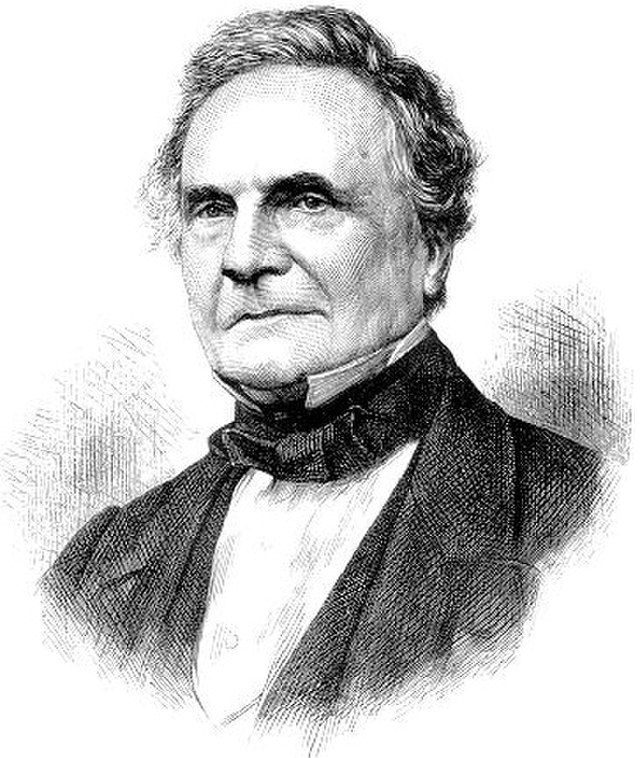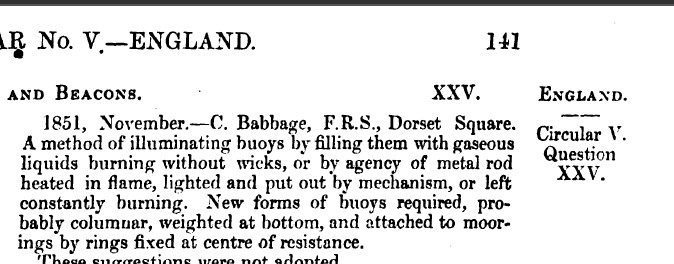The mathematician, Charles Babbage, took note of the problems with shipping and produced ‘Notes Respecting Lighthouses‘ in 1852.

Thomas Dewell Scott, Public domain, via Wikimedia Commons
This proposed an elegant system for coding lighthouses and anticipated the use of lighted buoys by more than twenty years. He was, of course, ignored by the British authorities, although the Russians1See p220 Good words, ed. by N. Macleod possibly implemented his ideas to their advantage in the Crimean War2Babbage & Kelvin – Occulting Lights see Lighthouses of the Future.
His plans for buoys included each buoy having a distinct light sequence so that it could be uniquely identified. He also suggested signalling real-time depth by lighting sequences with a change in colour for rising or falling tide.
Lights to mark the depth of water must have a heavy float connected with them , which at every foot of its rise or fall, must alter the number of occultations made by the coloured light . It must also , at the turn of the tide , change the colour of the light . It is sufficient for the present purpose to observe , that the mechanism similar to that by which a clock strikes different hours , might be employed for this purpose. The well in which the float is placed ought to be open to the tide by several small apertures ; this would render the rise or fall of the float more uniform .
Charles Babbage, Notes Respecting Lighthouses, 1852.
Notes
Charles Babbage, Notes Respecting Lighthouses, 1852.
THE INGENIOUS INVENTIONS OF MR BABBAGE!

- 1See p220 Good words, ed. by N. Macleod
- 2Babbage & Kelvin – Occulting Lights see Lighthouses of the Future
